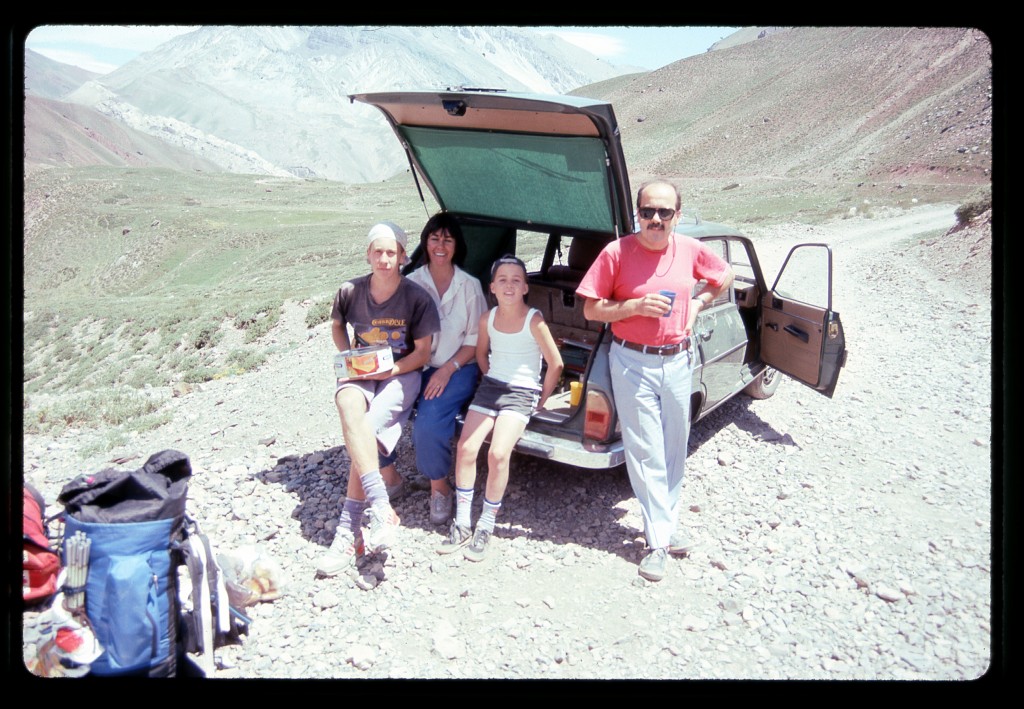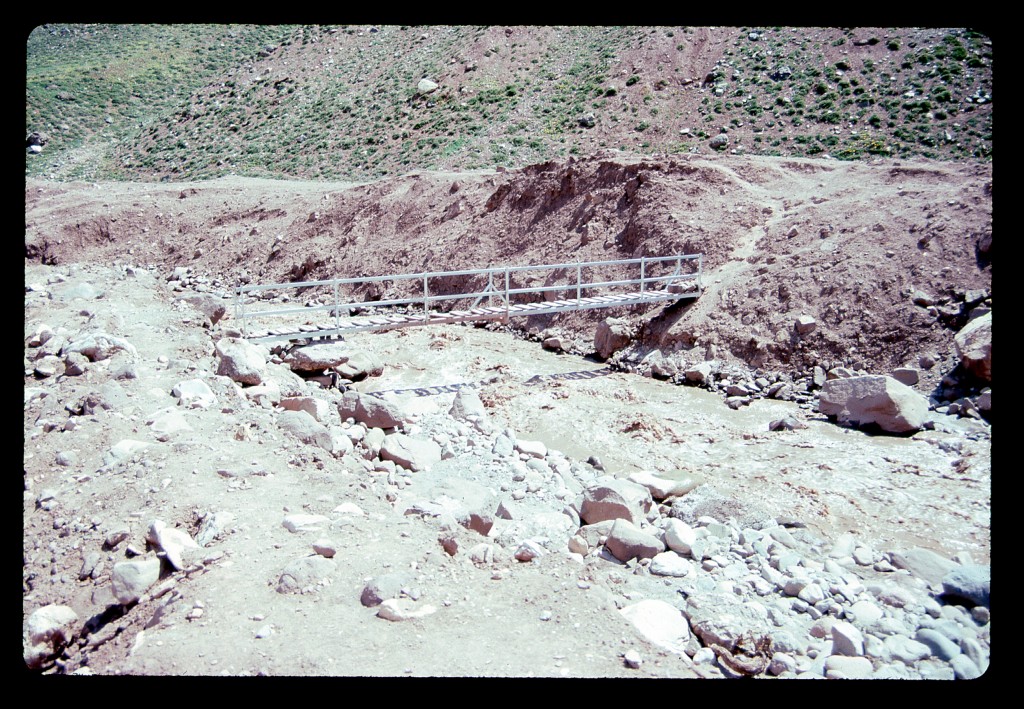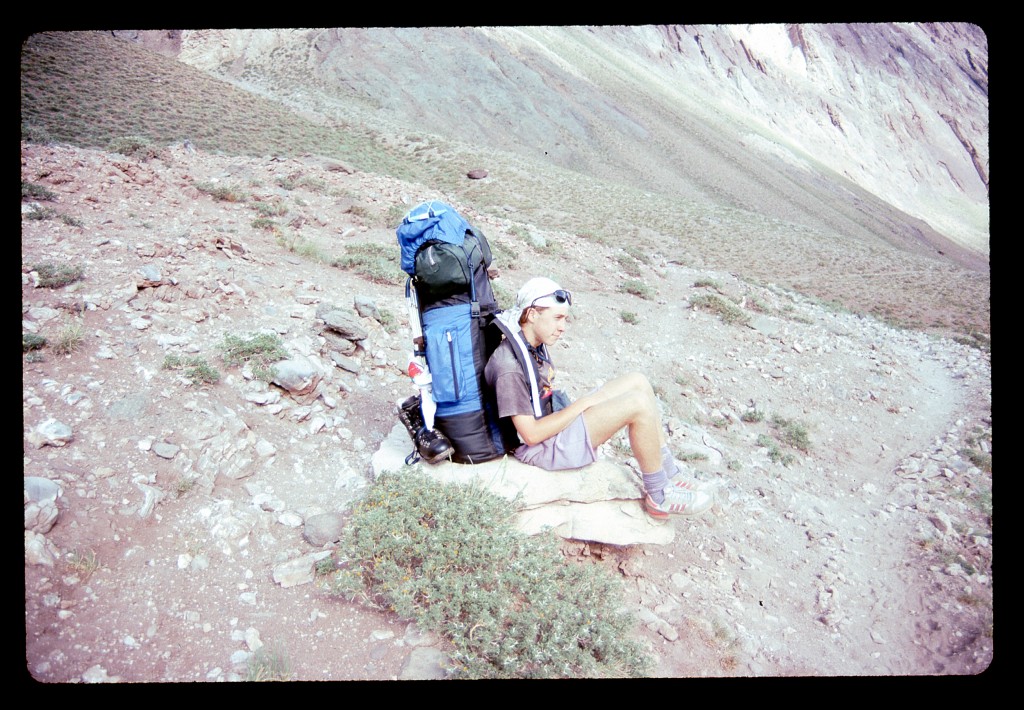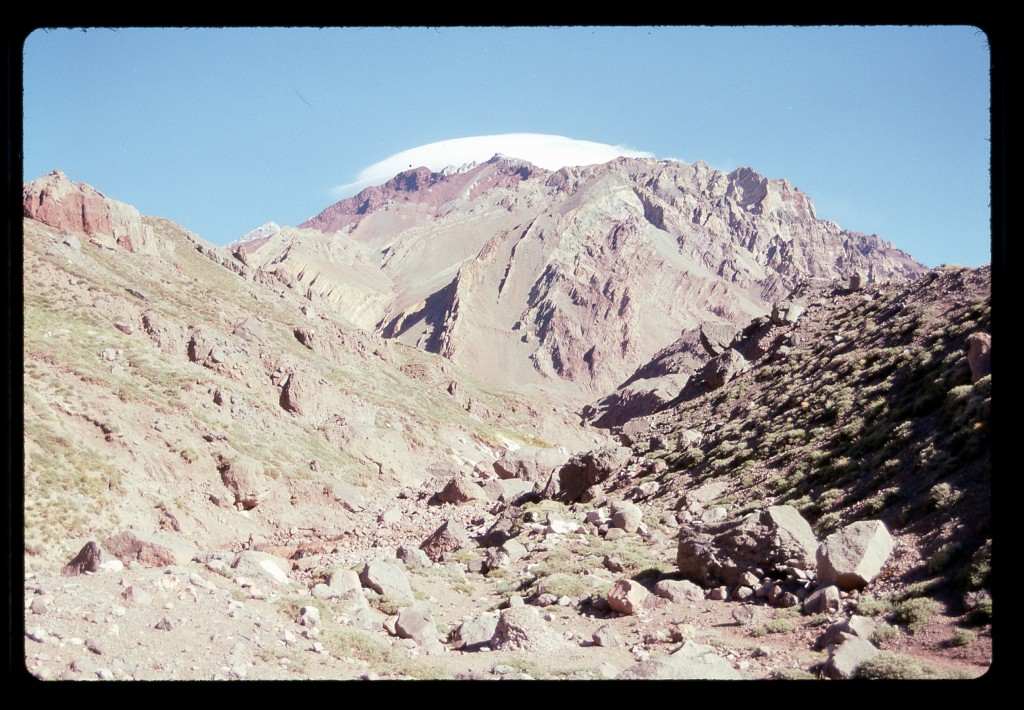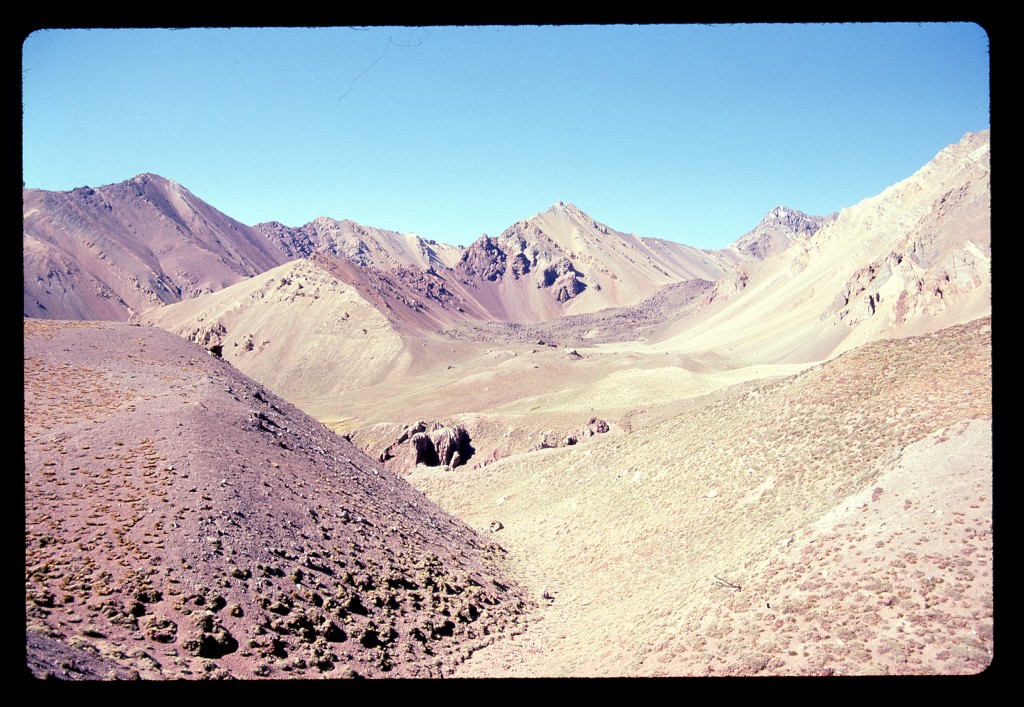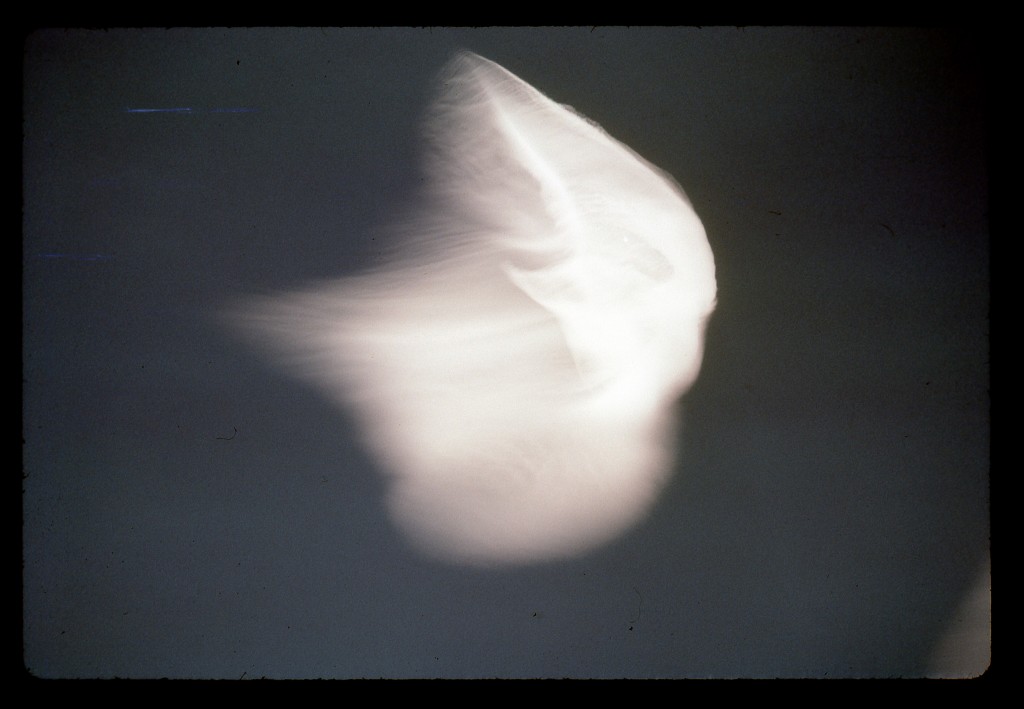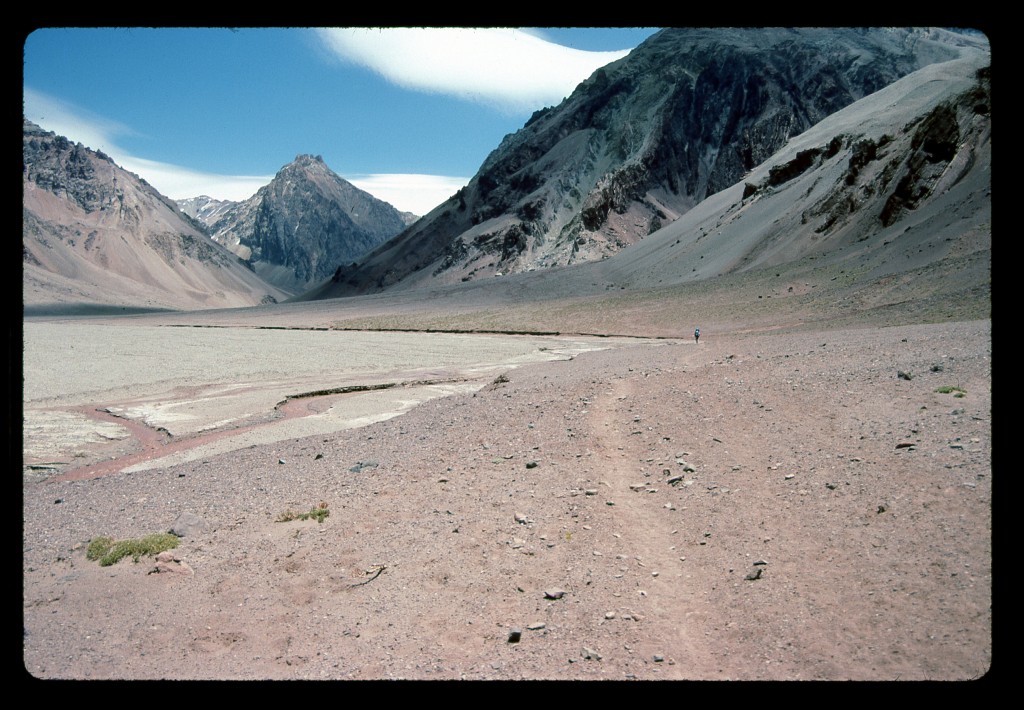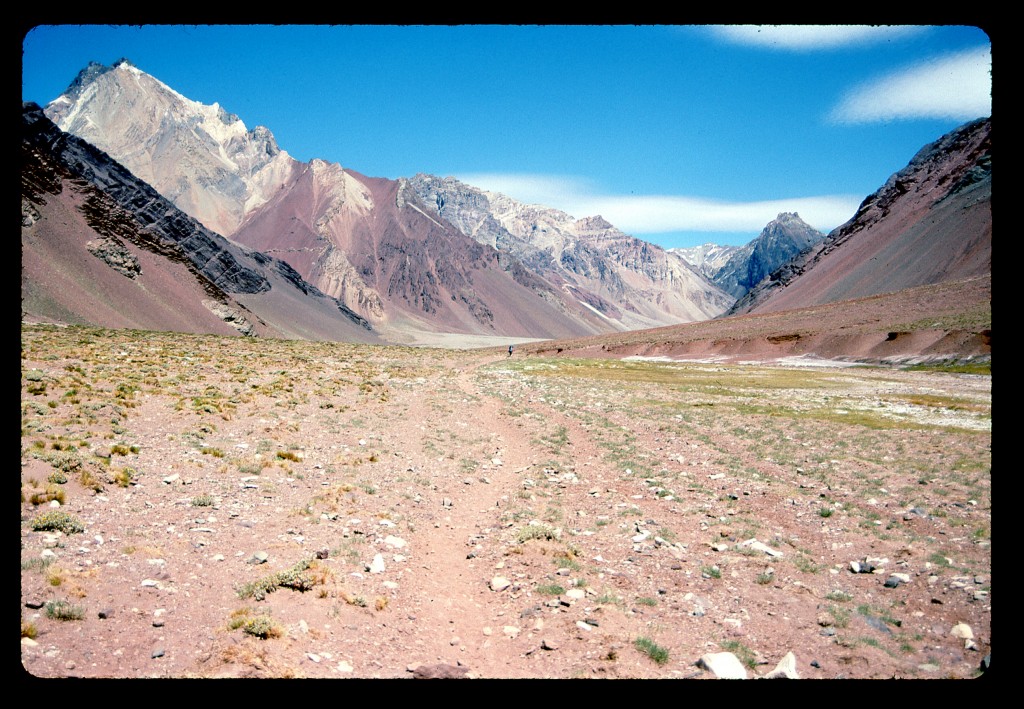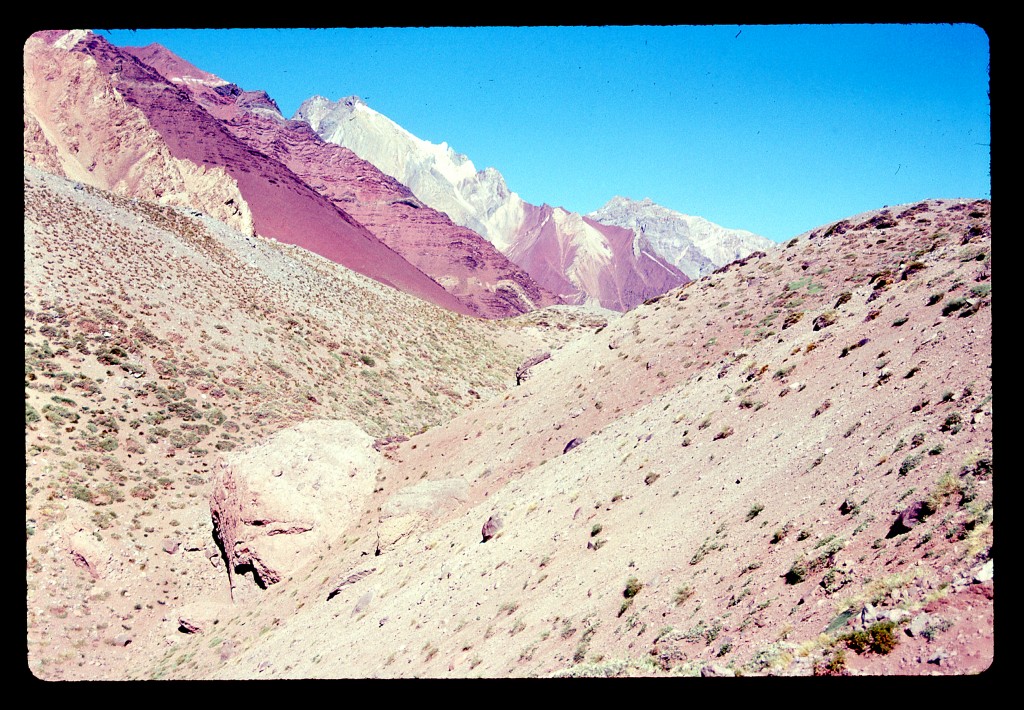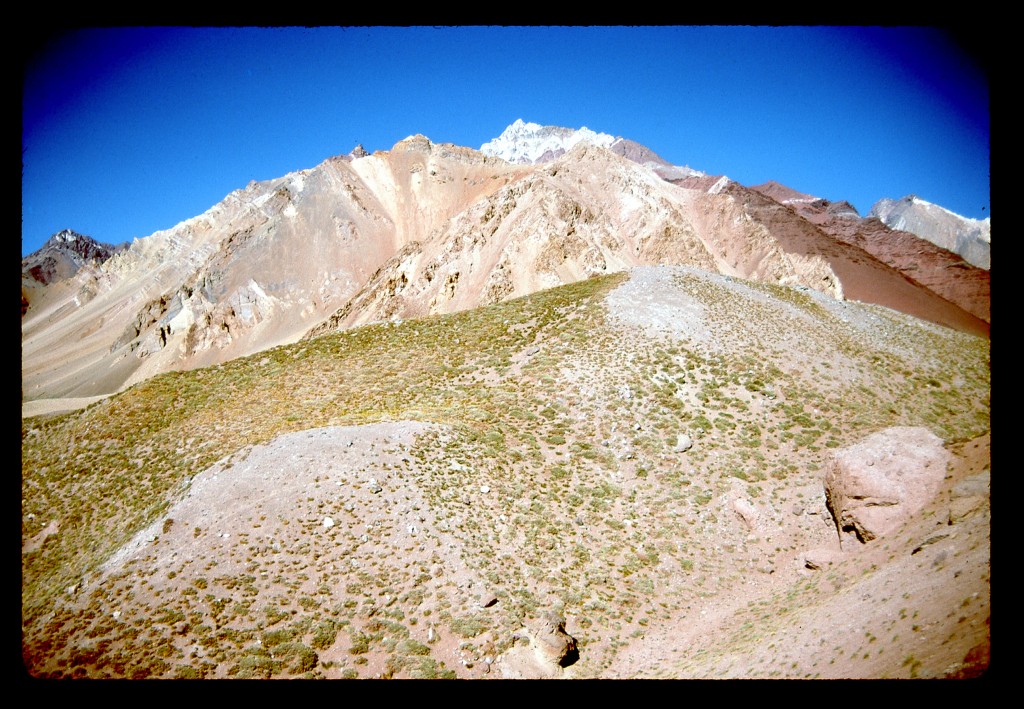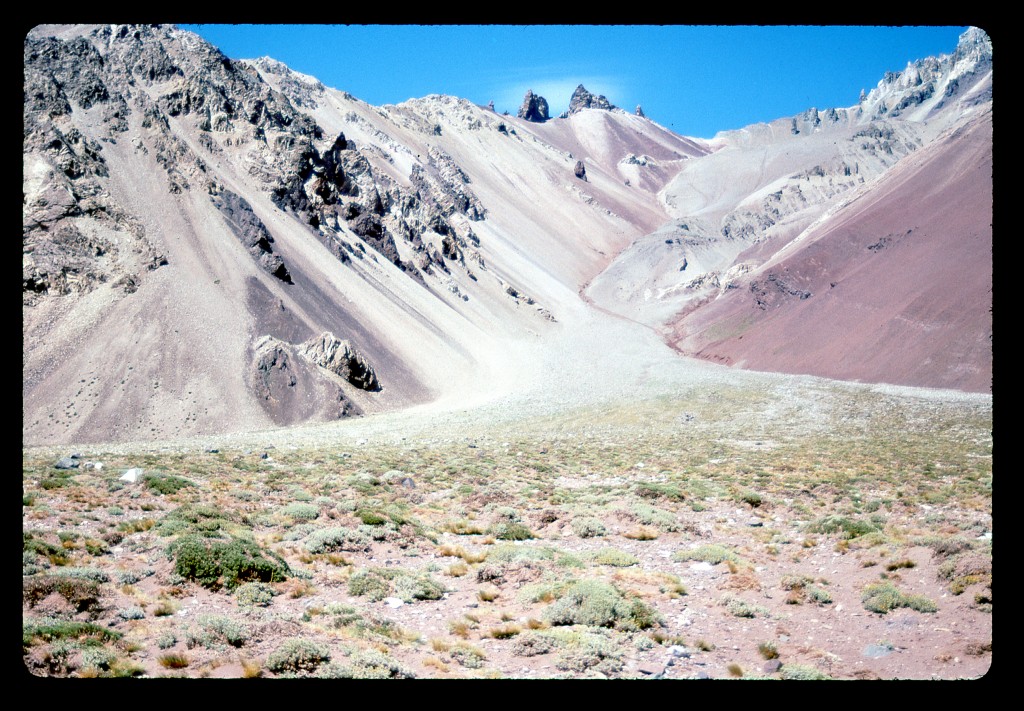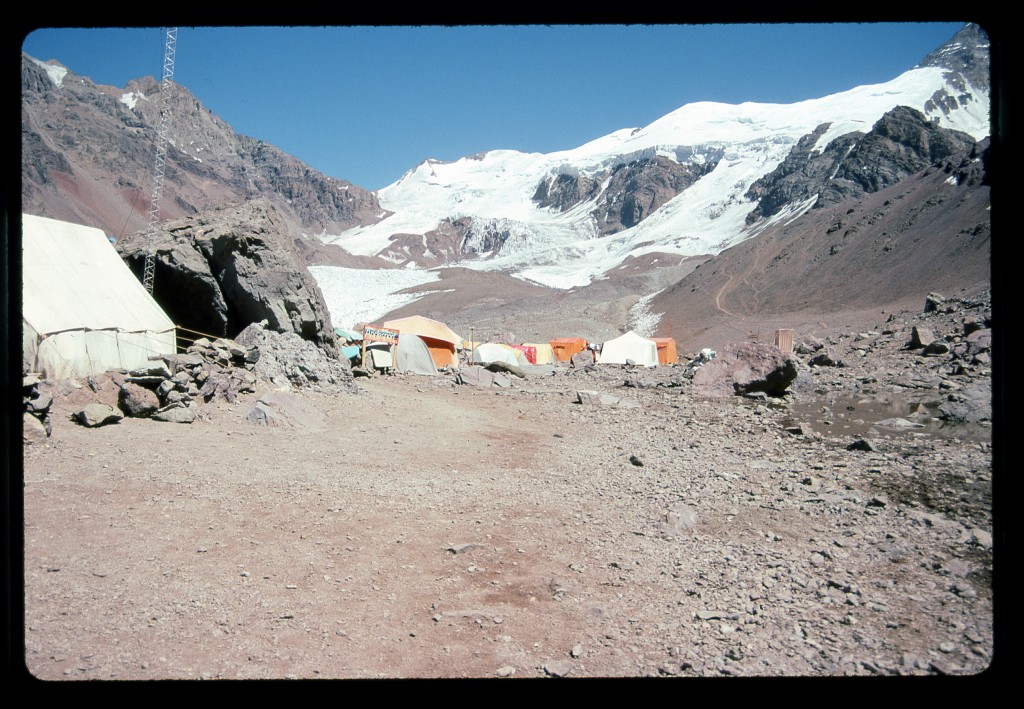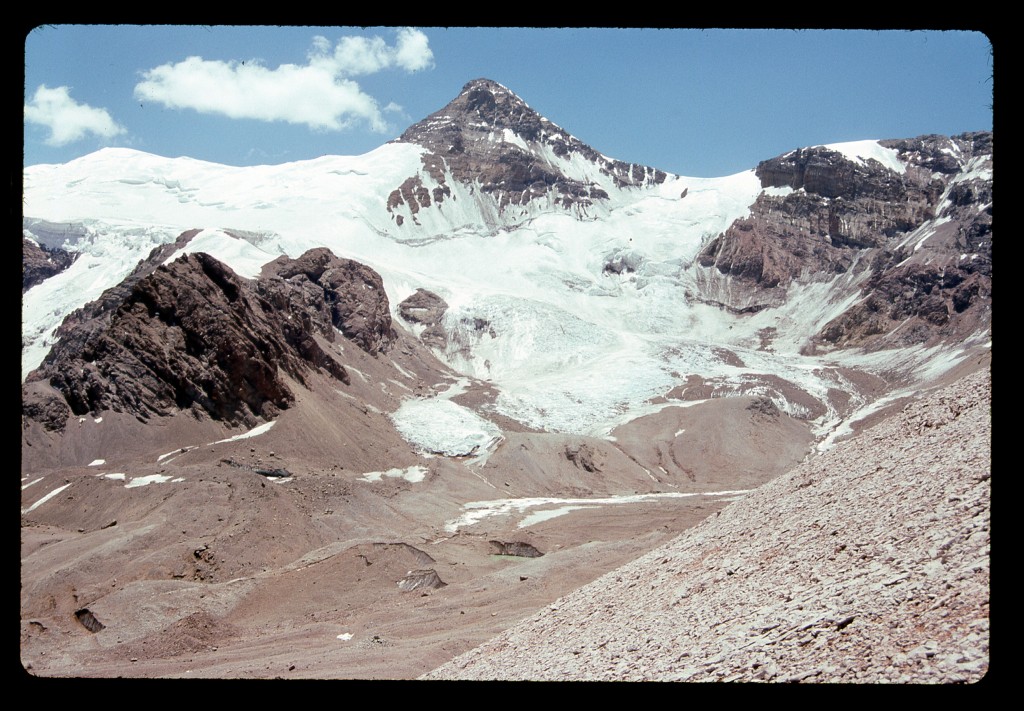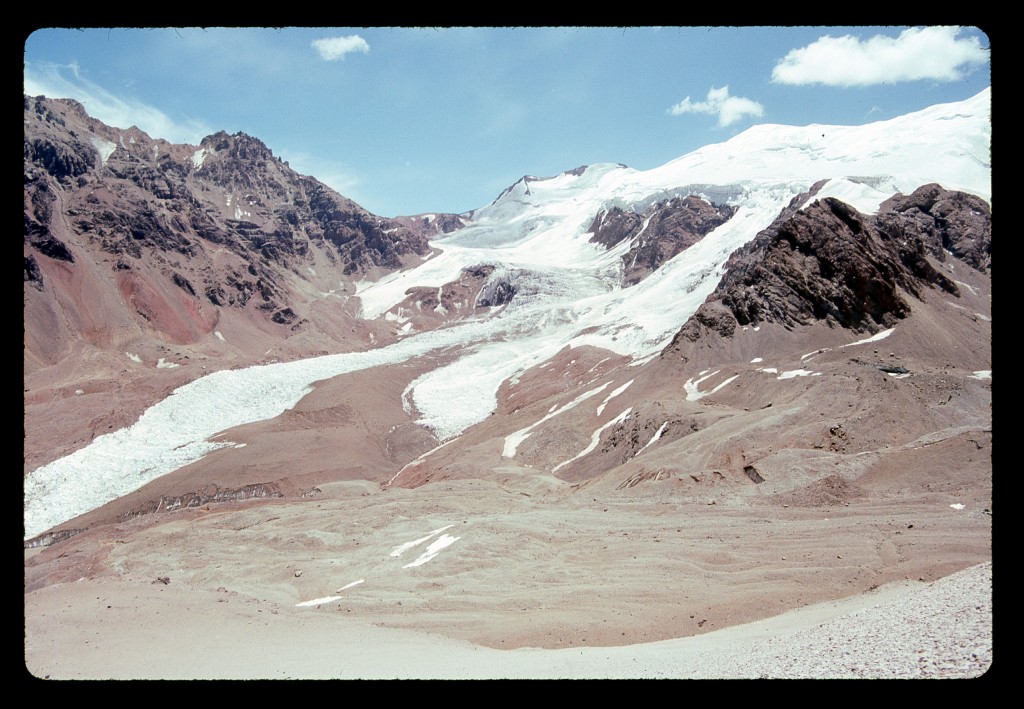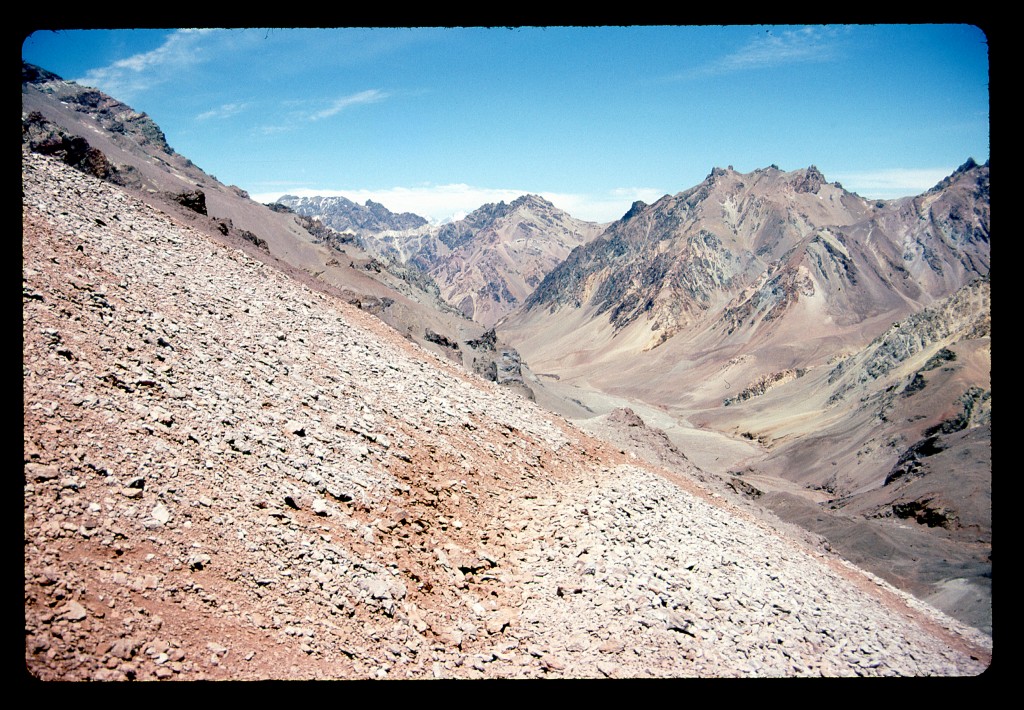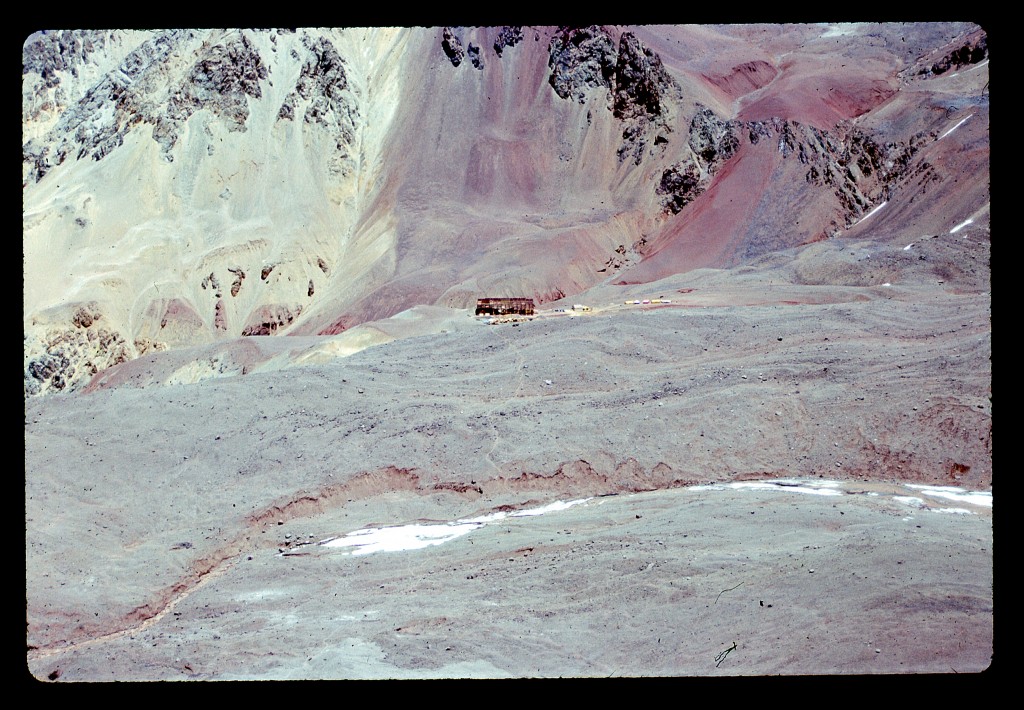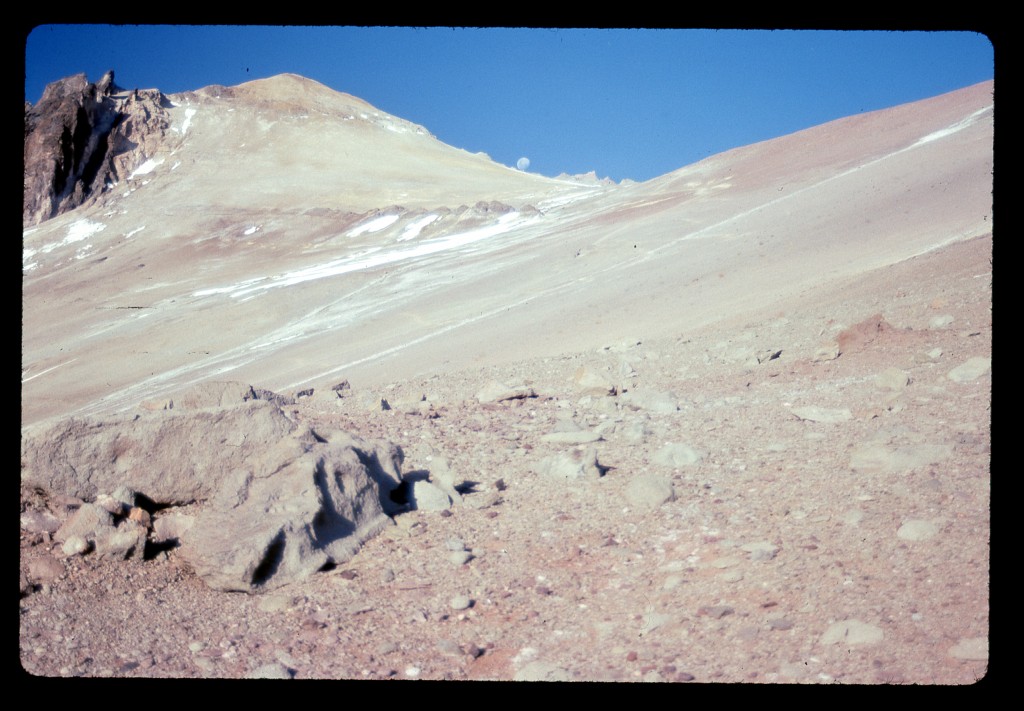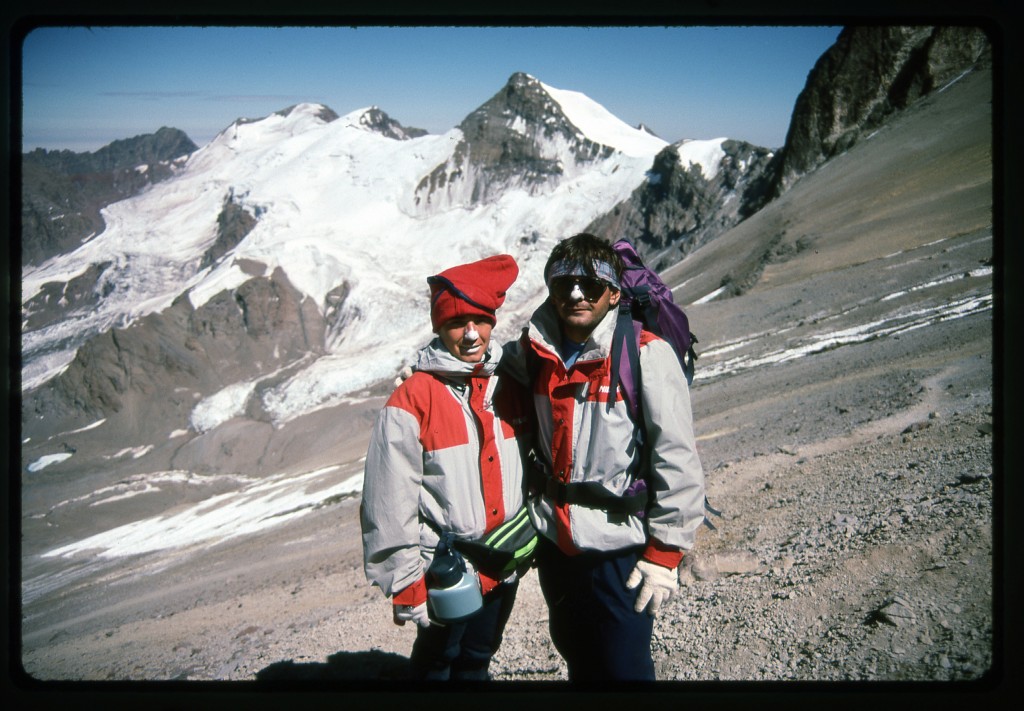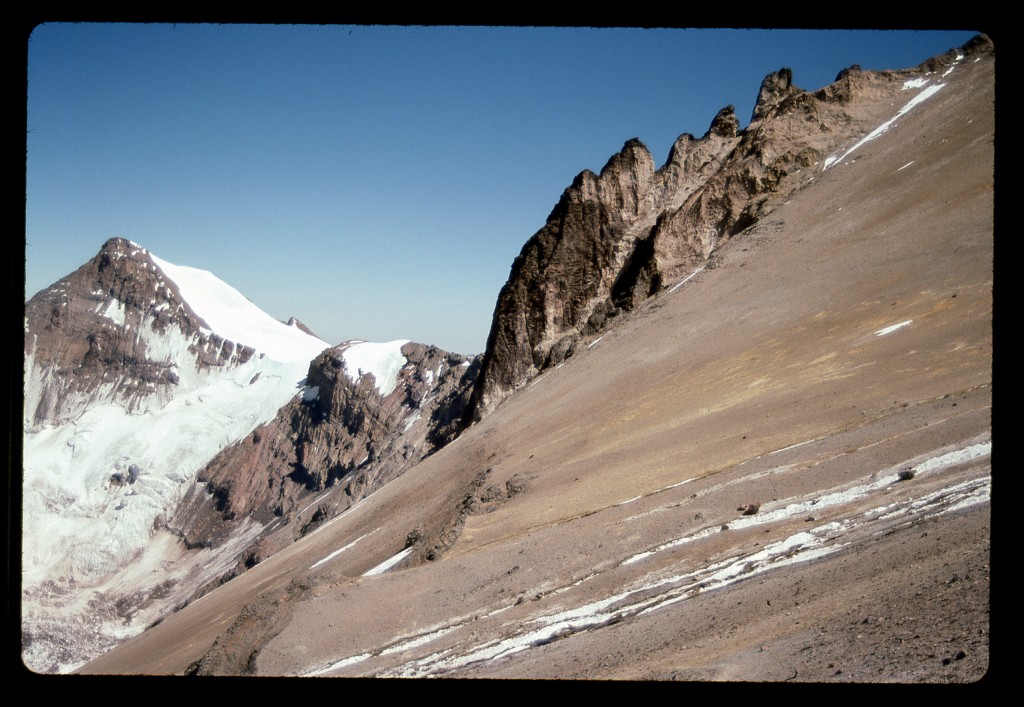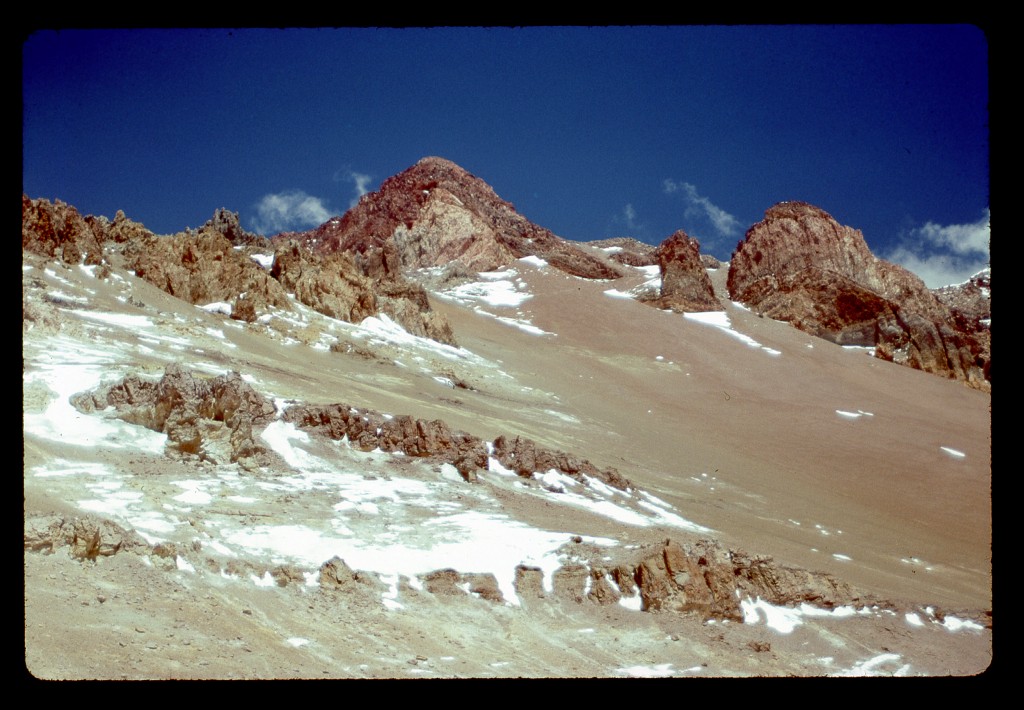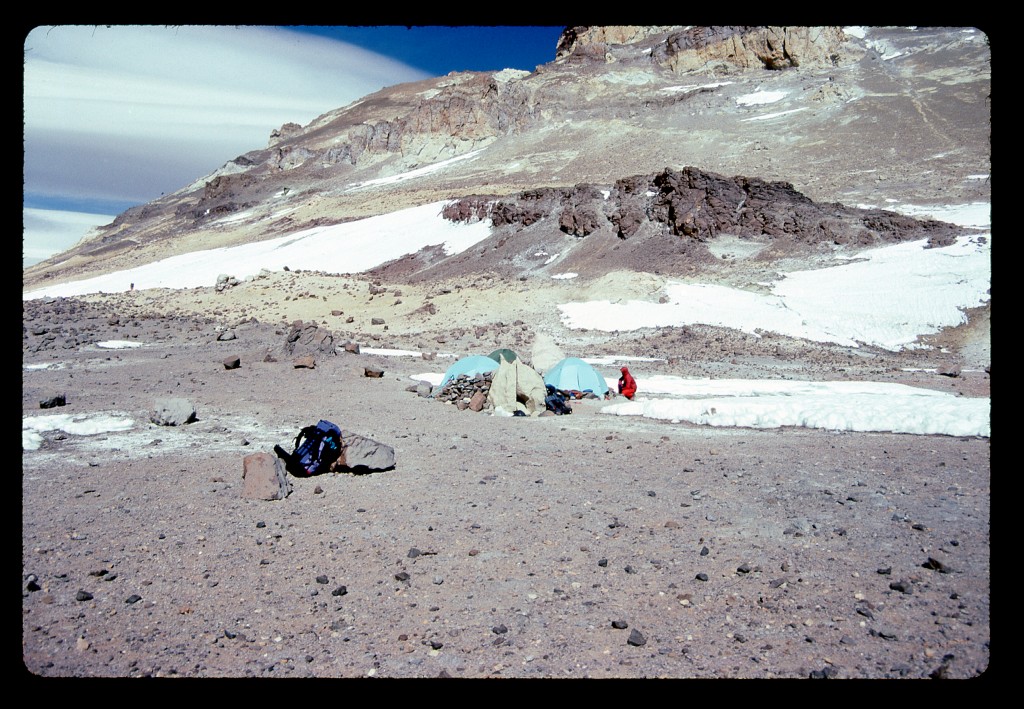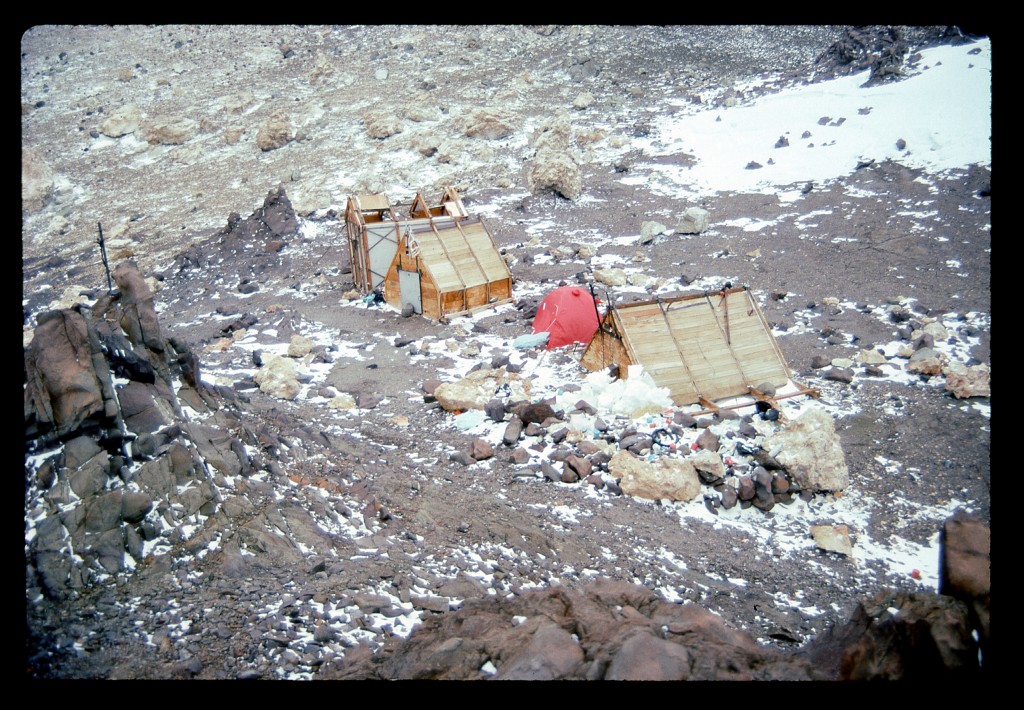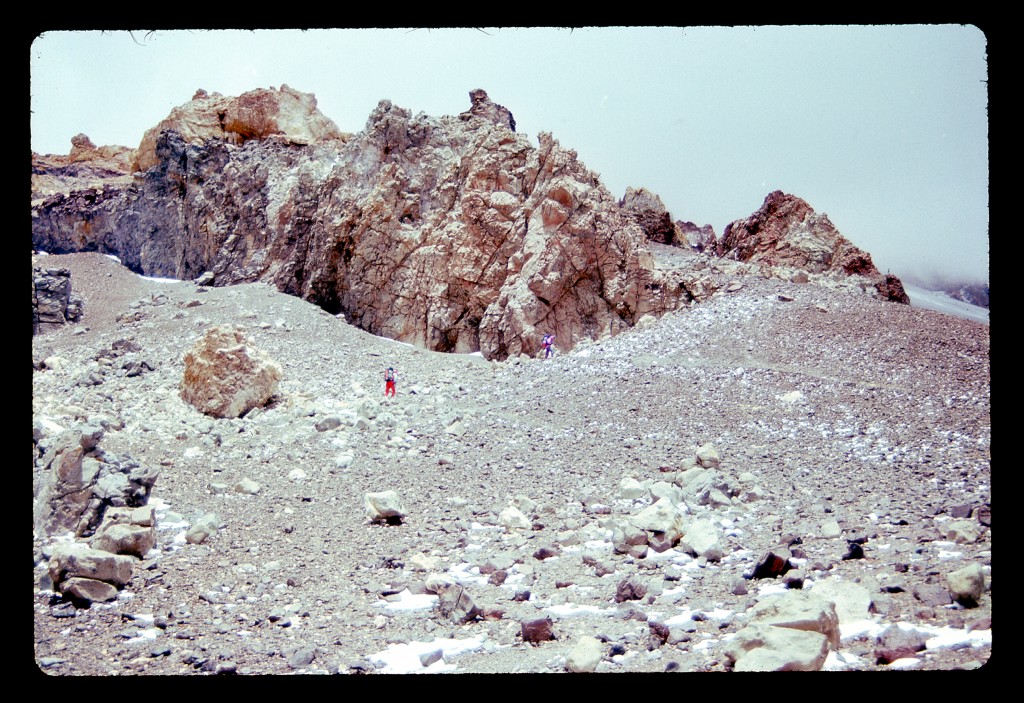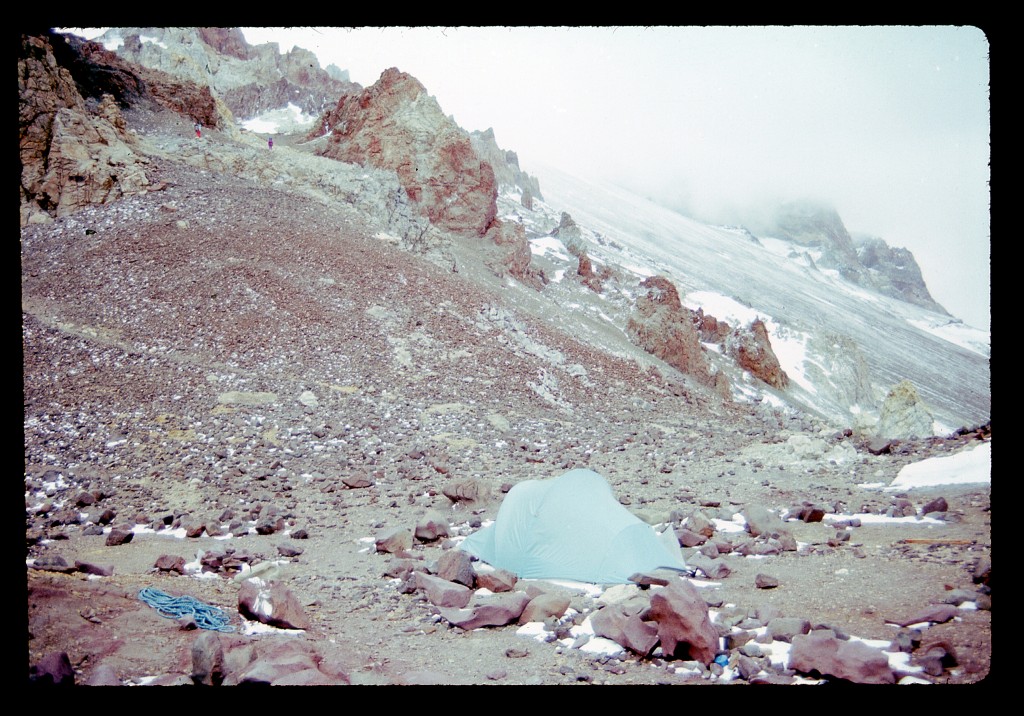To get the most from this story, make sure you’ve read the first 5 parts which have already been published on this site, under the “Stories” tab.
Adrián Cangiani was the name of the young fellow I’d met in the Cordón del Plata. He was 18 years old and very much wanted to go to Aconcagua. When he’d learned I was heading there, he asked if he could accompany me – not to try for the summit, but to get a feel for the place: the long march in; the base camp. I was glad for his company – he was a great guy, serious about mountaineering, anxious to learn. His family was delightful – I mean, think about it, to welcome a complete stranger into your home on Christmas Day! His father, Daniel, was a biochemist. His mother, María Teresa, and little brother Nicolás, rounded out the family.
The day was spent eating, washing clothes and making a call home to the USA. I also spent a lot of time sorting gear for the mountain, some of which I needed to use on the walk in and for camping en route; much of it would stay in Mendoza at the Cangiani home. Most of it I’d send on ahead by mule – I’d made arrangements with the Cuesta family, well-known arrieros who supported the Aconcagua trade. I even managed a nap before we ate supper at 10:30 PM, early for Argentina.
Early on the morning of the 26th, I went shopping for the food I’d need for the climb. I also bought some super-glue to fix my ailing boots, the lighter pair I’d been wearing up until now. My double boots, I was saving for the summit climb. Well, errands done, we all piled into the family car and drove the 125 miles to Puente del Inca, the jumping-off point for much of the Aconcagua climbing, From the village, it was a short drive of a few more miles to the end of a dirt road by the lagoon at 9,900 feet elevation.
As we enjoyed a picnic lunch, Adrián’s parents plied me with questions about Aconcagua – they must have figured I was some kind of authority on the place, even though I had failed miserably on my first attempt after a whole month on the mountain. Although I tried to reassure them as best I could, I could sense their worry. I promised them I’d keep a close eye on their son.
We bid them farewell and set out with full packs. There was a guardaparque tent set up before the crossing of the Río Horcones, where they checked my permit. Since I’d last been here early in 1990, a definite improvement was the metal foot-bridge they’d installed, which made for an easy and safe crossing of the river. I’d had to ford the thigh-deep, glacier-fed waters last time I was here.
We walked three hours and got as far as Confluencia but didn’t cross.
Here, at a bit over 11,000 feet, Adrián set up his tent; we ate and talked, but he had a bad headache so we went to sleep early, around 9:00 PM. Already I can feel I’m making much better progress than my last visit – I feel good, am eating and sleeping well – that bodes well for the summit attempt. So too does the fact that all those we meet on their way out tell of a snow-free mountain.
What a vivid dream! I’d tried to talk my teacher into flying to Ushuaia with me. Hmmm, what teacher? I don’t know if she ever went with me or not. In any case, it was a great sleep. By 10:00 AM, we’d packed up and started out again.
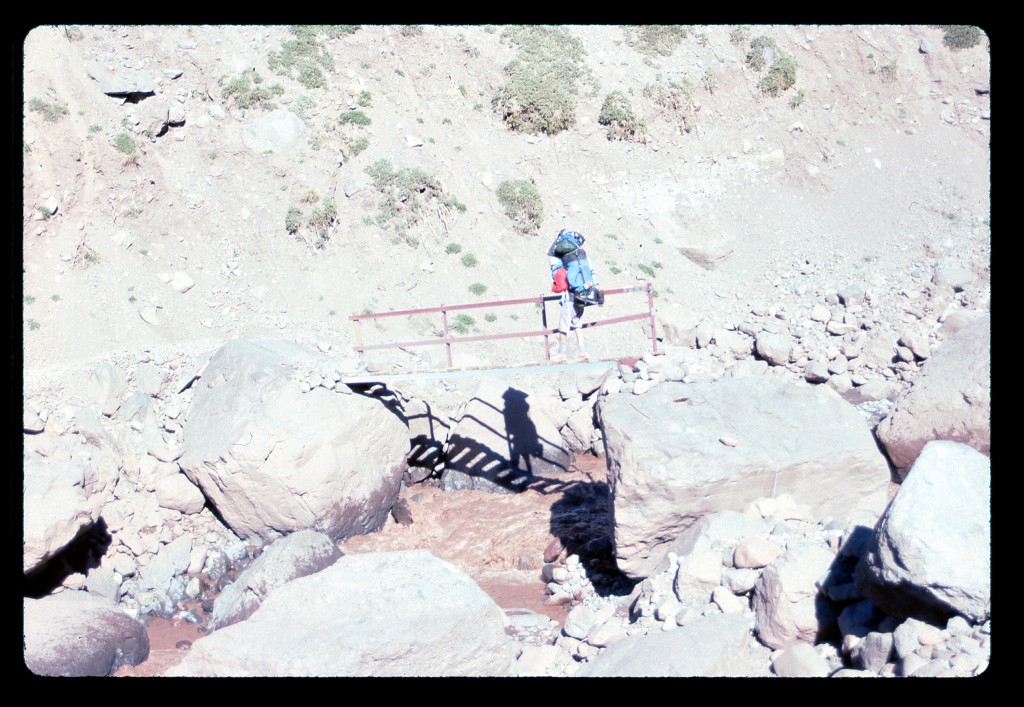
The upper bridge across the Río Horcones Inferior. This branch of the river drains the valley at the base of the enormous 10,000-foot south face of Aconcagua
En route, we ate a lot of home-made food Señora Cangiani had sent with us, and stayed well-hydrated. It seemed like we walked forever up the flat valley of the Río Horcones. Here are several pictures taken along the way.
The last 1,500 vertical feet was steeper and more tiring. It took us ten hours that day to reach the base camp, Plaza de Mulas, at 14,000 feet elevation. I’d camped out two nights on the 26-mile walk in on my first attempt eleven months earlier, so this trip was going so much better. The weather was perfect on the whole walk in – ojalá it holds. The altitude caught up to Adrián – he vomited a lot during the night. Perhaps it was a good thing he wasn’t planning to go any higher than base camp this time around.
I, on the other hand, wanted to take advantage of the weeks of acclimation for which I’d worked so hard. I slept in late, ate, had tea with several others, then prepared my pack. My gear had arrived on the back of a mule right on schedule, so I sorted everything once again. What a load, easily 60 pounds. I said farewell to Adrián and told him I’d be back soon. It was noon by the time I staggered out of camp under that weight.
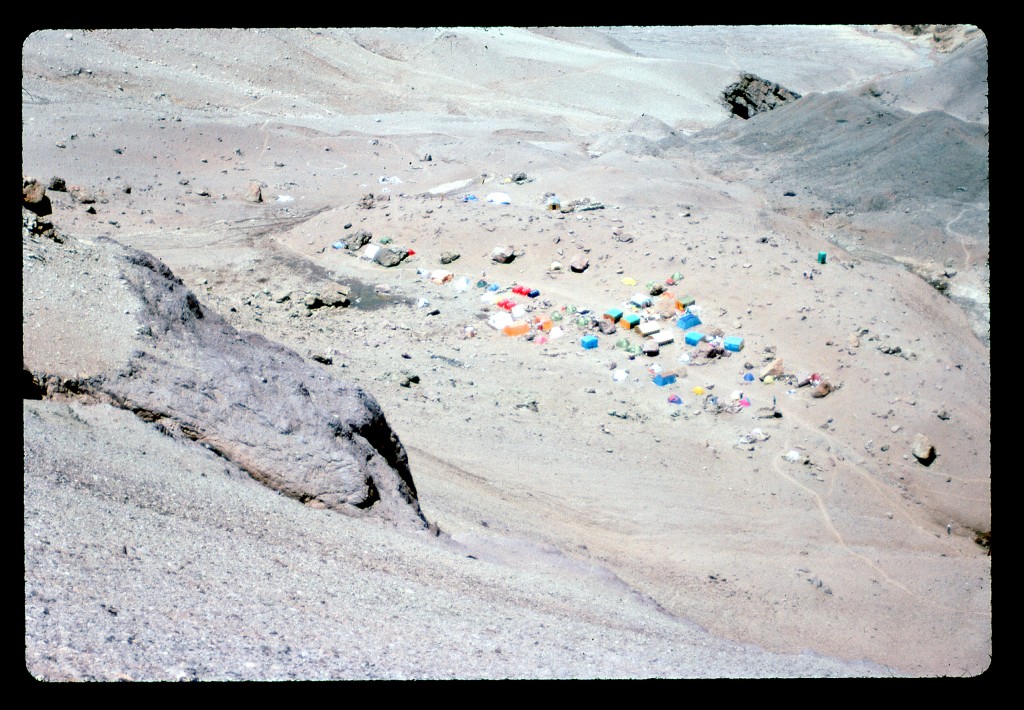
From about 14,500′. looking down on to the base camp. There were about 70 tents there at the time. some of them were large, so the camp probably held about 200 or 300 climbers at the time.
As I climbed higher, these are some views I had from around 15,000′.
Altogether it took me four hours to climb up to Plaza Canadá at 16,000 feet. That may seem slow, but I felt great when I got there, no altitude problems at all. I had the place to myself – it’s a good campsite: clean, quiet, spectacular. There was water nearby from snowmelt, but the silt in it was so fine that I couldn’t even strain it through cloth.
I set up my tent and was all tucked in and writing my diary by 7:00 PM.
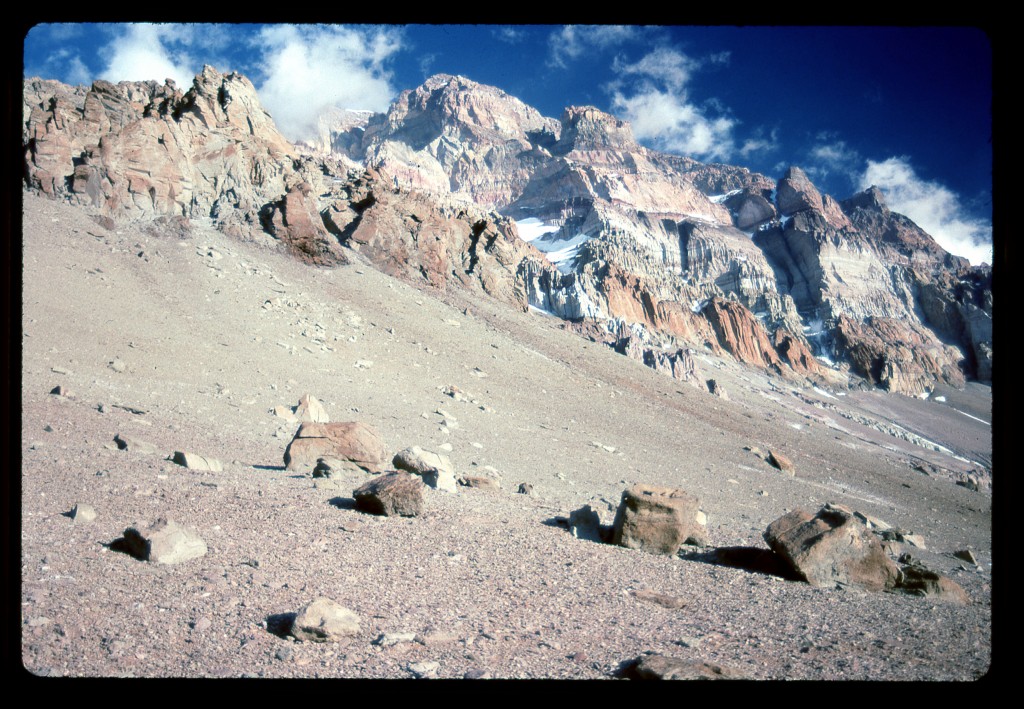
Evening, looking up the west slope of Aconcagua from Plaza Canadá. The summit is still 7,000 feet above me.
A blunder I realize I’ve made is that I didn’t bring a balaclava up here with me. That’s important. The last time I was here, I developed a throat infection at base camp and it did me in for a week, even with a course of antibiotics. Breathing frigid air unfiltered while sleeping was something I swore I wouldn’t do again, yet here I was. I’ll have to try to use a bandana over my mouth and nose for sleeping and climbing – hopefully it’ll work well enough.
After a good night’s sleep, I was all packed up and moving by ten o’clock. Not far out of camp, I was overtaken by a couple from Mendoza. They noticed my double boots hanging off the back of my huge pack and offered to carry them for me – I kindly accepted.
At the time, the double boots I was using were a pair of Galibier boots, the Makalu model. This boot was considered state-of-the-art for many years, and used by climbers world-wide who were climbing high and cold. They were a leather boot with a felt-lined inner boot. I also owned a pair of Super Guides at the time, but the Makalu was what was needed for the cold I expected on Aconcagua. Three hours after leaving Plaza Canadá, I arrived at my destination. Back in February, during my first visit to the mountain, the same carry had taken me five hours with a light pack, so I was pretty pleased that this time it only took me three hours with a very heavy pack.
It was 1:00 PM when I arrived at Nido de Cóndores, my next campsite at 18,200 feet elevation. Leonardo and Gabriela were there and gave me my boots, and I asked one more favor of them. I had written six postcards for friends in various countries, which I gave to them along with some money – would they please buy the appropriate postage and mail them for me? They were happy to do so (I did this several times while in Argentina with complete strangers, and they always came through for me).
I spent a leisurely afternoon eating, reading and lazing about. My little radio was getting put to good use. Santiago, Chile was only 60 air miles distant; Valparaíso a bit more, and I could receive lots of good FM stations. Several others are camped here – it’s a big, flat area with lots of room – and some of them are planning to make their summit bid from here. It’s tempting to try it, but I think I’d be better advised to go higher to the next camp and try from there. It would’ve been a perfect summit day, though – pretty clear, calm. The mountain is completely different than when I was here in February – it’s dry and snow-free now, and that’s good news. There’s a group here from Boise, Idaho planning a try for the summit in the AM, but I don’t think I’ll go with them.
My resting pulse at 7:00 PM was 92 – quite a bit higher than I’d like it to be.
I slept well once again, and awoke to a day with more clouds and cooler temperatures. It was Sunday, December 30th. While packing up, I noticed that the summit looked bad this morning. Once ready, I set out, and soon met the Boise group descending – they had tried, but the weather was no good. They had waited an hour at the base of the Canaleta before turning back. No matter, I continued up. Amazingly, I was only 2 1/2 hours up to Berlin camp (it had taken me twice as long on my previous visit). I arrived in the midst of snow flurries, which brought back bad memories of my last time here, when I had spent 5 days and nights storm-bound. A group of Japanese climbers were occupying the huts, so there was no room there.
I moved up a bit higher to an unoccupied site and set up my tent. Two Swiss climbers arrived – we chatted for a while, then they continued up even higher.
So here I am at 19,575 feet above sea level, hunkered down in crappy weather. I fired up the good old MSR stove and melted enough snow to make four liters of water. Snow flurries continued all day, so the weather was too poor to stay outside.
The only sensible thing to do was to crawl into my sleeping bag, but I didn’t sleep well. Maybe I was anxious about the weather – if it didn’t improve, it could sink my chances of success. It kept snowing, and I finally fell into a restless sleep, here at a height greater than the summit of Mt. Logan, Canada’s highest mountain.
Please stay tuned for the next installment in this series.
Please visit our Facebook page at https://www.facebook.com/pages/Desert-Mountaineer/192730747542690

